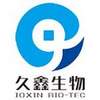mercury(ii)chlorideammonobasic
Mercury, ammoniated
CAS: 10124-48-8
Molecular Formula: ClH2HgN
mercury(ii)chlorideammonobasic - Names and Identifiers
| Name | Mercury, ammoniated |
| Synonyms | ammoniated Mercury, ammoniated aminomercurychloride hydrargyrumammoniatum mercuricamidochloride Mercury chloride azanide Quecksilberchloridazanid ammoniatedmercuricchloride ammonium mercuric chloride Chlorure azanide de mercure hydrargyrumprecipitatumalbum mercury,ammonobasic(hgnh2cl) mercury(ii)chlorideammonobasic |
| CAS | 10124-48-8 |
| EINECS | 233-335-8 |
| InChI | InChI=1/ClH.Hg.H3N/h1H;;1H3/q;+2 |
| InChIKey | WRWRKDRWMURIBI-UHFFFAOYSA-M |
mercury(ii)chlorideammonobasic - Physico-chemical Properties
| Molecular Formula | ClH2HgN |
| Molar Mass | 252.07 |
| Density | 5.38 |
| Melting Point | 383°C (dec.) |
| Boling Point | sublimes [CRC10] |
| Water Solubility | insoluble H2O, EtOH; soluble warm acid [CRC10] |
| Appearance | white solid |
| Color | White powder |
| Odor | Odorless |
| Merck | 13,5902 |
| Stability | Stable. |
| Use | For the pharmaceutical industry |
mercury(ii)chlorideammonobasic - Risk and Safety
| Risk Codes | R26/27/28 - Very toxic by inhalation, in contact with skin and if swallowed. R33 - Danger of cumulative effects R50/53 - Very toxic to aquatic organisms, may cause long-term adverse effects in the aquatic environment. |
| Safety Description | S13 - Keep away from food, drink and animal foodstuffs. S28 - After contact with skin, wash immediately with plenty of soap-suds. S45 - In case of accident or if you feel unwell, seek medical advice immediately (show the label whenever possible.) S60 - This material and its container must be disposed of as hazardous waste. S61 - Avoid release to the environment. Refer to special instructions / safety data sheets. |
| UN IDs | 2025 |
| WGK Germany | 3 |
| RTECS | OV7020000 |
| HS Code | 28521000 |
| Hazard Class | 6.1(a) |
| Packing Group | II |
mercury(ii)chlorideammonobasic - Upstream Downstream Industry
mercury(ii)chlorideammonobasic - Reference Information
Open Data Unverified Data
| EPA chemical information | Information provided by: ofmpub.epa.gov (external link) |
| properties | state: yellow spherical pore size (nm):~ 0.3 silicon-aluminum ratio: ~ 2 bulk density (g/ml):0.75 residual moisture content (wt%):0.09 diameter (mm):3-5 Na2Owt%:6.8 |
| application | is mainly used for drying petroleum cracked gas, olefin, refinery gas and oil field gas. it is an industrial desiccant for chemical industry, medicine, hollow glass and other industries. |
| storage conditions | room temperature; The relative humidity is not more than 90%; It is not suitable to be directly exposed to the air. Avoid water, acid and alkali. |
| use | used in pharmaceutical industry antiseptic, used for skin and mucous membrane infection. |
| production method | 20g HgCl2 is dissolved in 400mL of water to prepare a solution, and then the solution is mixed with 31mL of 6mol/L ammonia water. When the product is precipitated, it is filtered and washed with 180mL of cold water. (The amount of washing water must be strictly controlled, because excessive water consumption will cause part of the product to contain HgNH2Cl · H2O, which will make the product yellow.) Then the precipitate is dried at 30°C without light. When the product appears to be dry, it is ground into powder, and further dried at 30°C to finally obtain 18.5g of mercury amine chloride. |
| category | toxic substances |
| toxicity classification | highly toxic |
| acute toxicity | oral-rat LD50: 86 mg/kg; Oral-mouse LD50: 68 mg/kg |
| flammability hazard characteristics | combustible, mercury-containing fire is emitted from the fire site, and nitrogen oxides are spicy to stimulate smoke |
| storage and transportation characteristics | warehouse ventilation and low temperature drying; separate from oxidant and food storage and transportation |
| fire extinguishing agent | dry powder, sand |
| occupational standard | TWA 0.05 mg (mercury)/m3; STEL 0.15 mg (mercury)/m3 |
| toxic substance data | information provided by: pubchem.ncbi.nlm.nih.gov (external link) |
Last Update:2024-04-11 20:32:04

Supplier List
Spot supply
Product Name: Mercuric ammonium chloride Request for quotationCAS: 10124-48-8
Tel: 86-523-87558858,87612088
Email: 184089063@qq.com
yhj@joxbio.com
Mobile: 86-13615177555,15371578585,15370719785
QQ: 184089063
Spot supply
Product Name: Mercuric ammonium chloride Visit Supplier Webpage Request for quotationCAS: 10124-48-8
Tel: +86-400-900-4166
Email: product@acmec-e.com
Mobile: +86-18621343501
QQ: 2881950922
Wechat: 18621343501
WhatsApp: +86-18621343501
Multiple SpecificationsSpot supply
Product Name: Mercury, ammoniated Request for quotationCAS: 10124-48-8
Tel: 18818407278
Email: 278220866@qq.com
Mobile: 18818407278
QQ: 278220866
Wechat: 18818407278
Spot supply
Product Name: Mercuric ammonium chloride Request for quotationCAS: 10124-48-8
Tel: 86-523-87558858,87612088
Email: 184089063@qq.com
yhj@joxbio.com
Mobile: 86-13615177555,15371578585,15370719785
QQ: 184089063
Spot supply
Product Name: Mercuric ammonium chloride Visit Supplier Webpage Request for quotationCAS: 10124-48-8
Tel: +86-400-900-4166
Email: product@acmec-e.com
Mobile: +86-18621343501
QQ: 2881950922
Wechat: 18621343501
WhatsApp: +86-18621343501
Multiple SpecificationsSpot supply
Product Name: Mercury, ammoniated Request for quotationCAS: 10124-48-8
Tel: 18818407278
Email: 278220866@qq.com
Mobile: 18818407278
QQ: 278220866
Wechat: 18818407278
View History
mercury(ii)chlorideammonobasic
liquidoxygen
MOGROSIDE IIIE(P)
cobalt(2+)nitrate
C.I. Reactive yellow 3
CALCIUM HYDRIDE
DIMETHYLSILYLBIS(CYCLOPENTADIENYL)ZIRCONIUM DICHLORIDE
Rac 2-(4-Formylphenyl)propionic Acid
Fastogen Super Violet RTS
2-(DI-TERT-BUTYLPHOSPHINO)BIPHENYL
liquidoxygen
MOGROSIDE IIIE(P)
cobalt(2+)nitrate
C.I. Reactive yellow 3
CALCIUM HYDRIDE
DIMETHYLSILYLBIS(CYCLOPENTADIENYL)ZIRCONIUM DICHLORIDE
Rac 2-(4-Formylphenyl)propionic Acid
Fastogen Super Violet RTS
2-(DI-TERT-BUTYLPHOSPHINO)BIPHENYL
Raw Materials for mercury(ii)chlorideammonobasic


